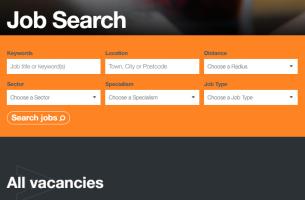
Gary Robinson
Aug 06, 2025
The Job Reality Gap: How to tell the difference between an advertised role and reality
For senior professionals in Logistics, Supply Chain and Sales, finding your next role isn’t just about a new job title or a pay rise, it’s a strategic career move.
But even highly experienced professionals can fall into the trap of the ‘Job Reality Gap’: the difference between what’s promised during the recruitment process and the actual role and working conditions once you're in post.
Whether you're stepping into a Head of Supply Chain role, taking on a Logistics Sales Manager position, or advancing to board level, it’s crucial to see past the polished interview pitch and understand the real operational landscape. Doing so can save you time, frustration, and potentially costly career missteps.
Here’s a checklist to help you evaluate job opportunities with confidence.
Checklist: Closing the Job Reality Gap
1. Unpack the Organisational Structure
Why it matters: Job titles can be misleading. It’s vital to understand where the role sits within the wider organisation.
Ask: Who’s responsible for what? How are cross-functional decisions made between operations, sales, and finance?
Red flag: An unclear reporting structure or an overly flat hierarchy in a company that’s supposed to be scaling.
2. Clarify Strategic Expectations
Why it matters: You’re not just filling a seat, you’re expected to deliver transformation, growth, or stability.
Ask: What are the deliverables over the next 6–12 months? What does success look like in year one?
Red flag: Vague goals with no concrete budget, timeline, or alignment at executive level.
3. Assess Cultural Alignment from the Top Down
Why it matters: At this level, culture is shaped (or at least tolerated) by leadership.
Ask: How do the exec team demonstrate values in real-world scenarios, not just on the website?
Red flag: A disconnect between what’s said in interviews and what team members actually experience.
4. Evaluate Operational Maturity
Why it matters: Leading in a chaotic or under-resourced environment can lead to burnout fast.
Ask: What systems, processes, and KPIs are currently in place? Are the operations scalable?
Red flag: Heavy reliance on spreadsheets or a constant firefighting culture passed off as "fast-paced".
5. Investigate Team Dynamics and Talent Depth
Why it matters: Your success is closely tied to the capability and cohesion of your direct reports and peers.
Ask: What’s the team’s average tenure and performance profile? Are there any known succession risks or issues with turnover?
Red flag: High turnover in key roles or a lack of clarity around accountability and ownership.
6. Confirm Revenue and Margin Transparency
Why it matters: In sales, supply chain and logistics leadership, you're responsible for both top-line growth and bottom-line efficiency.
Ask: How is performance monitored across sectors, verticals, and key accounts? Is there real-time data access?
Red flag: Leadership avoids sharing numbers or glosses over known challenges.
7. Understand Appetite for Change and Decision-making Speed
Why it matters: Senior leaders are often brought in to drive change, but not every business is truly ready for it.
Ask: What’s been attempted before? What’s stalled progress? Who really has decision-making authority?
Red flag: A pattern of false starts or resistance to ideas from new leaders.
8. Explore Cross-Departmental Collaboration
Why it matters: Success in logistics & supply chain hinges on seamless collaboration between operations, sales, IT, and finance.
Ask: How do departments currently work together? Are objectives aligned or conflicting?
Red flag: Siloed teams, internal politics, or historical friction between departments.
9. Request Time with Peers or Direct Reports
Why it matters: Those on the ground often give the clearest picture of what it’s really like to work there.
Ask: Can I speak with a few colleagues or team members to better understand the culture and day-to-day expectations?
Red flag: Pushback or evasiveness when you ask to speak with internal team members.
10. Gauge Long-Term Growth and Exit Strategy
Why it matters: At a senior level, your actions can shape the company’s future and your own professional legacy.
Ask: What’s the 3- to 5-year vision? Is the business preparing for expansion, acquisition, or consolidation?
Red flag: A lack of long-term planning or ambitious goals with no infrastructure to support them.
Senior professionals in logistics, transport, supply chain, and logistics or FMCG sales shoulder significant responsibility. But even the most seasoned leaders can find themselves caught off-guard if they don’t properly interrogate the reality behind the role.
By asking the right questions and listening carefully between the lines, you can avoid walking into a situation that limits your impact or derails your career.
Take the time to assess each opportunity strategically. Because at this level, it’s not just a job, it’s a legacy move.
Looking for your next legacy move, or searching for exceptional senior leadership talent across Logistics, Supply Chain, & Sales?


